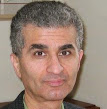In the science-fiction novel “Aelita” by Alexi Tolstoy (1923), in the chapter titled “the Abandoned House” we read:
“The yellowish aged pages formed a single sheet pleated in zigzags. These pages, blending one into the other, were covered with colored triangles the size of fingernails. They ran from left to right and back again in crooked lines, sometimes falling, sometimes entwining. They changed in shape and color. After a few pages colored rings appeared among the triangles, changing shape and shade. The triangles were formed into figures. The weaving and color gradations of these triangles, circles, squares, and complex figures ran on page after page. …. These played a barely perceptible, subtle, and astonishing music…this was a singing book.”
We can build this book by embedding an RFID chip in each page and connect the pages as Tolstoy describes. Next, we add some circuitry (embedded in the book's covers) to read the signals from RFID chips as the pages are turned. We use that information to play the music for that page and we adjust the tempo to the speed at which the pages are turned. We do not supply speakers with this circuitry – only out-put jacks for headphones.
I have supplied a list of the electronic components that are needed below with examples of actual chips that could do the job. The heart of the circuitry is the PortalPlayer PP5002, which contains an ARM processor core and all MP3-decoding circuitry. And 64 Mbytes of Samsung SDRAM provide the memory buffer for 40 minutes of "skip protection" and longer battery life since the music data is extracted from the SDRAM buffer. A megabyte of Sharp flash memory stores system operating code. A Texas Instruments chip is dedicated to the IEEE 1394 data interface. This Firewire link serves as both data and battery-charging interface. Audio output is via a Wolfson chip that supports both D/A conversion and the headphone driver amp.
The total cost of the components is less than $ 50.0 and I anticipate the manufacturing cost to be about the same amount. Thus, at a relatively modest cost of $100 one can have a sort of musical score book that is digitally enhanced to play the music as one turns the pages of the score. Future enhancement s could include storing multiple performances into the FLASH memory and thus studying how different conductors have interpreted that score at different times and places or the inclusion of pictures or even videos of these performances by using thin organic translucent conducting films.


No comments:
Post a Comment